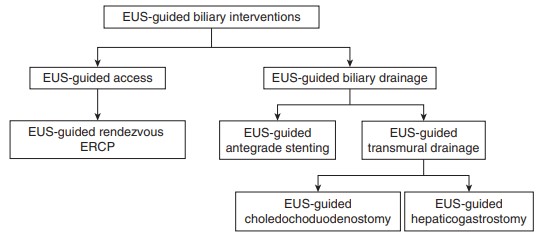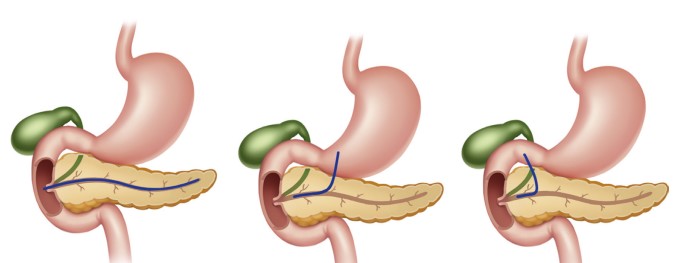
Endoscopic Ultrasound-Guided Drainage of the Biliary-Pancreatic Ductal Systems and Gallbladder
Innovative Management of Biliary and Pancreatic Duct Obstructions
The evolution of endoscopic techniques has significantly improved the management of biliary and pancreatic duct obstructions. Among these advancements, Endoscopic Ultrasound-guided Biliary Drainage (EUSBD) stands out as a pivotal procedure, particularly for patients in whom traditional endoscopic retrograde cholangiopancreatography (ERCP) has failed.
Tailoring EUS-BD to Patient Needs: A Strategic Approach
The choice of approach in EUS-guided Biliary Drainage (EUS-BD) is crucial and should be tailored to the individual needs of the patient. This decision-making process is guided by a comprehensive algorithm that considers various patient-specific factors, ensuring optimal outcomes and minimizing complications.

EUS-Guided Pancreatic Duct Drainage: A Safe Alternative
For patients suffering from symptomatic obstructed pancreatic ducts, EUS-guided pancreatic duct drainage offers a safe and feasible alternative. This technique alleviates symptoms and improves quality of life by effectively draining the obstructed ducts, demonstrating the procedure’s versatility and safety.


Advancements in EUS-Guided Gallbladder Drainage
EUS-guided transmural gallbladder drainage is emerging as a superior alternative to percutaneous methods, especially for patients with acute cholecystitis who are unfit for surgery. This approach not only provides effective drainage but also offers a less invasive option with reduced risk of complications.
The Importance of Advanced Techniques and Devices
The success and safety of EUS-guided drainage procedures heavily rely on the use of advanced techniques and specialized devices. These dedicated tools have been designed to enhance the efficacy of the procedures, ensuring a good safety profile and superior outcomes for patients undergoing EUS-guided drainage of the biliary-pancreatic ductal systems and gallbladder.
Conclusion
Endoscopic Ultrasound (EUS)-guided drainage techniques represent a major leap forward in the management of biliary-pancreatic ductal and gallbladder obstructions. With the ability to tailor approaches to individual patient needs, the use of advanced devices, and a strong emphasis on safety and efficacy, these procedures offer promising alternatives to traditional methods. As technology continues to advance, the potential for improving patient outcomes in gastroenterology grows ever greater.
Disclaimer: This content is for informational purposes only and should not be considered as medical advice. Always consult a healthcare professional for personal medical advice.
Learn More About Our Gastroenterology Services
Contact Us for More Information
